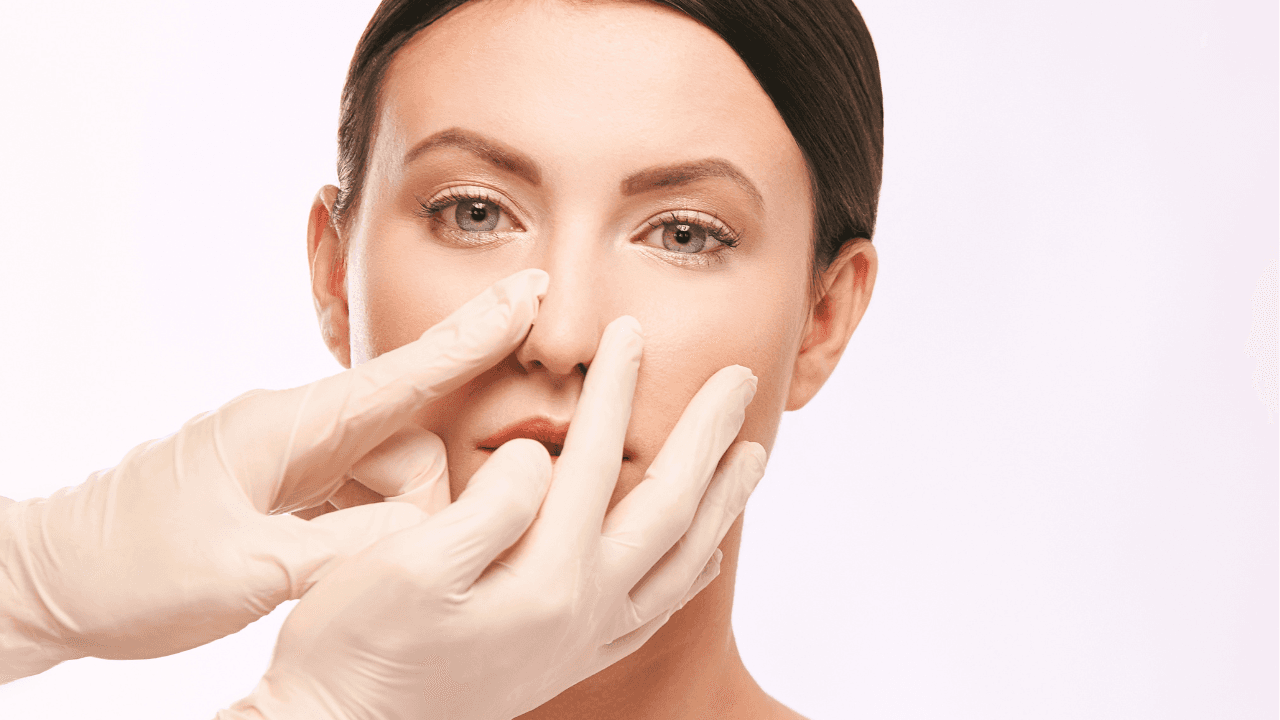Medical Tourism Blog
Nasolabial Angle Adjustment in Korea | Best Clinics, Costs, Procedure Types & More

Table of contents
- What Is Nasolabial Angle Adjustment?
- Best Nasolabial Angle Adjustment Clinics in Korea
- Nasolabial Angle Adjustment in Korea
- Alternatives to Nasolabial Angle Adjustment
- Conclusion
Have you ever considered how a subtle adjustment to your nasolabial angle could transform your facial profile? In Korea, a global hub for cosmetic innovation, the Nasolabial Angle Adjustment procedure is gaining popularity for its ability to enhance facial harmony with precision and advanced surgical techniques.

What Is Nasolabial Angle Adjustment?
Nasolabial Angle Adjustment is a cosmetic surgical procedure aimed at altering the angle formed between the base of the nose and the upper lip. This angle, typically ranging from 90 to 115 degrees in most individuals, plays a significant role in facial aesthetics, influencing overall profile balance, harmony, and proportion.
Who Can Benefit from the Procedure?
Individuals who might benefit from a Nasolabial Angle Adjustment include those who are dissatisfied with their facial profile, particularly if the nasolabial angle is excessively acute or obtuse. This procedure is often sought by patients who are self-conscious about having a "hooked" nose, a protruding chin, or a retrusive maxilla. People from a variety of ethnic backgrounds may seek this adjustment to achieve facial symmetry or to accentuate specific features. Additionally, the procedure may be recommended for patients with congenital anomalies or those who have undergone trauma resulting in facial asymmetry.
Procedure Types
There are several techniques for Nasolabial Angle Adjustment, each tailored to a patient's unique needs and facial structure:
-
Surgical Rhinoplasty: This is the most common approach where a combination of cartilage grafting or reduction is used to adjust the nasal tip position or the septum. By altering the nose structure, the surgeon can effectively modify the nasolabial angle.
-
Lip Augmentation or Reduction: Procedures focused directly on the lip can be used, such as injectable fillers like hyaluronic acid to enhance the upper lip. Conversely, lip reduction might be considered if the lip position contributes to an undesirable nasolabial angle.
-
Orthognathic Surgery: For patients with more significant maxillofacial discrepancies, orthognathic surgery might be needed. This involves realigning the jaw or adjusting the maxilla to influence the overall facial profile and nasolabial angle.
Pros
-
Enhanced Facial Balance: Correcting the nasolabial angle can significantly improve facial aesthetics, leading to a more harmonious profile.
-
Boost in Self-Confidence: Many patients report increased confidence post-procedure due to improved facial symmetry and appearance.
-
Customization: Procedures can be highly personalized, accommodating the diverse anatomical needs and aesthetic desires of each patient.
-
Combination Possibility: Nasolabial Angle Adjustment can often be combined with other cosmetic procedures such as a facelift or chin augmentation for comprehensive facial rejuvenation.
Cons
-
Surgical Risks: As with any surgery, there are inherent risks including infection, bleeding, and adverse reactions to anesthesia.
-
Recovery Time: Depending on the type of procedure, recovery can range from several days to a few weeks, with potential for swelling, bruising, and discomfort.
-
Cost: This cosmetic procedure can be costly and is typically not covered by insurance unless deemed medically necessary.
-
Unpredictable Results: Though rare, there is a possibility of unsatisfactory results or asymmetry, which may require revision surgery.
By understanding the intricacies of Nasolabial Angle Adjustment, patients can make informed decisions and have realistic expectations about the potential outcomes of this transformative procedure.
Best Nasolabial Angle Adjustment Clinics in Korea
Listed below are the best clinics in Korea:
| Clinic Name | Key Features | Special Techniques |
|---|---|---|
| THEPLUS Plastic Surgery | Premier clinic for nasolabial angle adjustment, esteemed surgeons, comprehensive facial aesthetics, state-of-the-art facility | Expertise in rhinoplasty and facial contouring, pioneering research on 3D implants |
| Made Young Plastic Surgery | Excellence in rejuvenative and aesthetic plastic surgery, commitment to safety, innovative techniques, highly skilled team | Specialized approach to nasolabial angle adjustment, cutting-edge methods |
| Okay Plastic Surgery Clinic | Transformative approach to aesthetic care, sincerity, precision, individualized treatment, extensive range of services | Advanced lifting techniques, body contouring, breast augmentation, hairline correction |
THEPLUS Plastic Surgery
THE PLUS Plastic Surgery in Korea stands out as the premier clinic for nasolabial angle adjustment, thanks to its team of highly esteemed surgeons and comprehensive approach to facial aesthetics. Led by Dr. Kim Taek Kyun and Dr. Jeong Jae Yong, the clinic is renowned for its expertise in rhinoplasty and facial contouring. Dr. Kim, a board-certified plastic surgeon, is celebrated for his pioneering research on 3D implants and his dedication to achieving a harmonious balance of facial features. His commitment to enhancing natural beauty is evident in his meticulous approach to surgery. Dr. Jeong, the President of the Korean Society of Plastic Surgeons, is a global authority on rhinoplasty, known for integrating function and aesthetics in his practice. Both surgeons are actively involved in educating their peers, contributing to the advancement of plastic surgery standards worldwide. Located in the vibrant Garosu-gil area of Gangnam, Seoul, THE PLUS Plastic Surgery offers a state-of-the-art facility that ensures a seamless experience from consultation to post-operative care. Their dedication to safety, patient satisfaction, and continuous learning makes them the top choice for those seeking nasolabial angle adjustments and other advanced cosmetic procedures.
You can check out their website here: THEPLUS Plastic Surgery Website

Made Young Plastic Surgery
Made Young Plastic Surgery Clinic, located in the vibrant Gangnam district of Seoul, is renowned for its excellence in rejuvenative and aesthetic plastic surgery. The clinic is a leader in the field, known for its commitment to safety and innovative techniques that blend traditional beauty ideals with modern advancements. With a focus on patient care and satisfaction, Made Young offers a comprehensive range of procedures tailored to individual needs, making it a top choice for those seeking to enhance their appearance and confidence.
- Expertise in Nasolabial Angle Adjustment: Made Young is recognized for its specialized approach to nasolabial angle adjustment, ensuring natural and harmonious results.
- Innovative Techniques: The clinic employs cutting-edge methods that integrate the latest advancements in plastic surgery, providing patients with the best possible outcomes.
- Highly Skilled Team: The clinic boasts a team of experienced plastic surgeons and medical professionals dedicated to patient safety and satisfaction.
- Comprehensive Care: From initial consultation to post-operative follow-up, Made Young ensures a seamless and supportive experience for all patients.
- Tailored Treatments: Each procedure is customized to meet the unique aesthetic goals and needs of the individual, ensuring personalized care and optimal results.
- Commitment to Safety: With safety as a guiding principle, Made Young prioritizes the wellbeing of its patients throughout every stage of their treatment journey.
You can check out their website here: Made Young Plastic Surgery Website
Okay Plastic Surgery Clinic
At Okay Plastic Surgery Clinic, we pride ourselves on offering a transformative approach to aesthetic care, particularly in the realm of nasolabial angle adjustment. Our philosophy is centered around sincerity, precision, and individualized treatment, ensuring that each patient receives a solution tailored to their unique needs and aspirations. Led by a team of specialized professionals, including a renowned female plastic surgeon with extensive experience, we provide more than just medical procedures. We offer a comprehensive journey of personal transformation, guided by expertise, empathy, and cutting-edge medical techniques.
Our clinic is equipped with an extensive range of specialized aesthetic services, meticulously designed to address diverse patient needs. From body contouring and breast augmentation to hairline correction and advanced lifting techniques, we ensure that every aspect of our care is aligned with the highest standards of medical excellence. Whether you are seeking to refine your facial features, enhance your body contours, or rejuvenate your skin, Okay Plastic Surgery Clinic is dedicated to helping you achieve your aesthetic goals with confidence and satisfaction.
You can check out their website here: Okay Plastic Surgery Clinic Website
Nasolabial Angle Adjustment in Korea
South Korea has rapidly become a global leader in cosmetic surgery, attracting patients from all over the world. Among its sought-after procedures is the nasolabial angle adjustment, which focuses on the enhancement of facial harmony and aesthetics. The journey to Korea for this procedure offers a comprehensive experience, blending cutting-edge medical technology with culturally rich pre- and post-operative care.
Arrival and Consultation
Upon arrival, patients are often greeted by medical tourism coordinators who assist with everything from airport transfers to accommodations. Many clinics in Korea, especially those located in Seoul, provide personalized services for international patients. These include multilingual staff and coordinators who help bridge cultural and language barriers, ensuring that patients feel comfortable and informed at every step.
Initial consultations are thorough and patient-focused. Korean cosmetic surgeons are well-known for their detailed approach, leveraging advanced imaging technology to provide a visual and personalized treatment plan. Surgeons discuss the ideal nasolabial angle relative to the patient’s unique facial features, ensuring results that are both natural and harmonious.
The Procedure
Nasolabial angle adjustment in Korea typically involves minimally invasive techniques. Surgeons might employ fillers, fat grafting, or surgical options to achieve the desired angle and enhance facial balance. Clinics are equipped with state-of-the-art systems, ensuring precision, safety, and comfort during the procedure.
One of the distinguishing factors of having this surgery in Korea is the meticulous attention to aesthetic detail and the extensive training Korean surgeons undergo. Many practitioners are internationally recognized for their expertise, published research, and contributions to the field of cosmetic surgery. This expertise is complemented by an array of modern facilities, ensuring that patients receive premier care.
Post-operative Care and Recovery
After the procedure, clinics offer detailed recovery plans. Patients can expect a blend of traditional Korean wellness practices, such as herbal treatments, along with modern medical care to reduce swelling and expedite recovery. Clinics often provide follow-up appointments to monitor progress and make any necessary adjustments to the healing process.
The integration of advanced medical practices with a holistic approach is a hallmark of surgery in Korea. Patients often find comfort in the availability of personalized care, with on-call medical staff ready to assist with any concerns. This combination of efficiency, technology, and personal care significantly eases the recovery journey.
Cultural Experience
While the primary focus is on the procedure, the cultural experience of being in Korea adds a unique aspect to the journey. Patients often take the opportunity to explore Korea's vibrant culture and rich history as part of their recovery. From visiting ancient palaces in Seoul to experiencing Korean cuisine, the country offers a welcoming environment that enhances the overall experience.
Overall, undergoing nasolabial angle adjustment in Korea is more than just a medical trip; it's an immersion into a world where cosmetic surgery is seamlessly integrated with cultural richness, resulting in a comprehensive and rewarding experience.
Alternatives to Nasolabial Angle Adjustment
In the realm of cosmetic procedures, individuals seeking enhancements around the nasolabial region may consider various alternatives to nasolabial angle adjustment. Here are three recommended alternatives, each offering distinct approaches to cosmetic enhancement in Korea:
Dermal Fillers
Dermal fillers provide a non-surgical option for those looking to address concerns around the nasolabial folds and other facial areas. Composed primarily of hyaluronic acid, these fillers add volume and reduce the appearance of deep lines and creases. The procedure involves injecting the fillers directly into the skin, offering immediate results with minimal downtime. In Korea, where cutting-edge techniques are commonly employed, practitioners can tailor treatments to achieve a natural and youthful appearance that harmonizes with the individual's facial features.
Fat Grafting
Fat grafting, or fat transfer, is another popular alternative that involves harvesting fat from another area of the patient's body and injecting it into the nasolabial region to enhance volume and smooth out wrinkles. This method not only reduces nasolabial folds but also uses the patient's own tissue, which reduces the risk of allergic reactions. The procedure can be more appealing in Korea, given the emphasis on natural enhancements and biocompatibility. It typically offers longer-lasting results compared to temporary fillers and is well-suited for those looking for a more enduring solution.
Thread Lift
The thread lift is a minimally invasive procedure that provides a subtle lift to the areas around the nasolabial folds, cheeks, and jawline. Using dissolvable threads, cosmetic surgeons in Korea strategically place them under the skin to pull and tighten sagging tissues. This technique offers the dual benefit of lifting the skin while promoting collagen production, leading to a rejuvenated look over time. Thread lifts can be an attractive alternative for those seeking a less invasive option than a full facelift, with the convenience of quicker recovery time and less post-procedure discomfort.
Each of these alternatives offers unique advantages, allowing individuals to choose a path that best aligns with their aesthetic goals and personal preferences. In Korea, the availability of advanced cosmetic techniques fosters a landscape where personalized and effective treatments are readily accessible.
Conclusion
In conclusion, Nasolabial Angle Adjustment in Korea is rapidly emerging as both a popular and effective cosmetic procedure, drawing international attention for its precision and aesthetic outcomes. Korean cosmetic surgeons are renowned for their expertise and commitment to natural-looking results, employing advanced techniques and technologies to tailor procedures to individual needs. This focus on personalization and subtlety, coupled with a holistic understanding of facial harmony, has solidified Korea's reputation as a global leader in cosmetic surgery. For individuals seeking to enhance their facial balance and address concerns related to aging or anatomical features, Nasolabial Angle Adjustment in Korea offers a promising avenue for transformative results. As the field continues to evolve, prospective patients from around the world are likely to benefit from Korea’s cutting-edge advancements and deep-rooted cultural emphasis on beauty and aesthetics.











